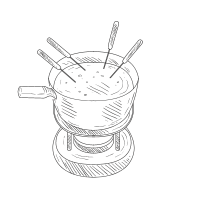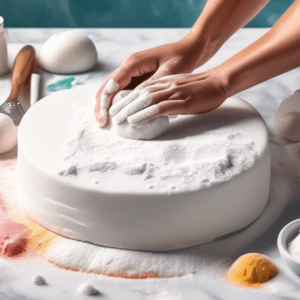Introduction
Fondant, the smooth and pliable icing that graces countless cakes, pastries, and confections, is a testament to the artistry of baking. Its velvety texture and ability to be molded into intricate shapes have captivated bakers and dessert enthusiasts alike. While the process of making fondant may seem daunting at first, with a bit of patience and the right guidance, you too can unlock the secrets to creating this versatile icing.
Understanding Fondant: A Baker’s Canvas
Fondant, in its essence, is a sugar dough that transforms into a baker’s canvas. It’s the medium through which culinary creativity takes shape, adding an element of elegance and sophistication to cakes and desserts. Unlike buttercream, which is typically spread, fondant is rolled out and draped over cakes, creating a smooth and flawless finish.
Types of Fondant: Exploring the Options
The world of fondant extends beyond a single variety. Let’s delve into the two main types you’ll encounter:
1. Rolled Fondant
As the name suggests, rolled fondant is known for its ability to be rolled out into thin sheets, making it ideal for covering cakes. Its elasticity allows for intricate decorations and designs to be crafted with precision.
2. Poured Fondant
Poured fondant, on the other hand, boasts a more fluid consistency. It’s commonly used for glazing pastries, cookies, and candies, adding a touch of sweetness and a polished look.
Crafting Rolled Fondant: A Step-by-Step Guide
Creating your own rolled fondant is a rewarding experience. Here’s a comprehensive guide to walk you through the process:
Ingredients You’ll Need:
- 1 tablespoon (1 envelope) unflavored gelatin
- 1/4 cup cold water
- 1/2 cup light corn syrup
- 1 tablespoon shortening
- 1 teaspoon clear vanilla extract
- 8 cups (2 pounds) confectioners’ sugar, plus more for dusting
Instructions:
1. Prepare the Gelatin:
In a heatproof bowl, sprinkle the gelatin over the cold water. Allow it to bloom for about 5 minutes, or until the gelatin has absorbed the water and become spongy.
2. Create the Fondant Base:
In a saucepan, combine the corn syrup and shortening over medium heat. Cook, stirring constantly, until the shortening is melted and the mixture is smooth. Remove from the heat and carefully pour the hot syrup mixture over the bloomed gelatin, stirring until the gelatin is completely dissolved.
3. Incorporate the Flavor:
Stir in the vanilla extract. The mixture should be smooth and glossy.
4. Gradually Add the Sugar:
In a large bowl, using a stand mixer fitted with the paddle attachment, gradually add the confectioners’ sugar to the gelatin mixture, beating on low speed until the sugar is incorporated and a dough begins to form. The mixture will be thick and sticky.
5. Knead the Fondant:
Transfer the fondant dough to a work surface lightly dusted with confectioners’ sugar. Knead the fondant for 8-10 minutes, or until it is smooth, elastic, and no longer sticky. Add more confectioners’ sugar, 1 tablespoon at a time, if needed to achieve the desired consistency.
6. Wrap and Rest:
Shape the fondant into a disc, wrap it tightly in plastic wrap, and let it rest at room temperature for at least 30 minutes before rolling and using.
Tips for Success:
- Use high-quality confectioners’ sugar for best results.
- Avoid getting any water into the fondant once it’s made, as this can make it sticky.
- If the fondant is too soft, knead in more confectioners’ sugar. If it’s too hard, microwave it in 5-second intervals until pliable.
- Store leftover fondant at room temperature in an airtight container for up to 2 weeks.
Exploring Flavor and Color:
While the basic fondant recipe provides a blank canvas, don’t hesitate to experiment with flavors and colors. Add a teaspoon of your favorite extracts, such as almond, lemon, or peppermint, to the fondant base before kneading. To achieve vibrant hues, use gel or paste food coloring, adding a small amount at a time until you reach the desired shade.
Conclusion:
Making fondant is a journey that rewards patience and precision. With this comprehensive guide, you’re well-equipped to embark on your fondant-making adventures. So gather your ingredients, embrace the process, and unleash your creativity as you transform cakes and desserts into edible works of art.

